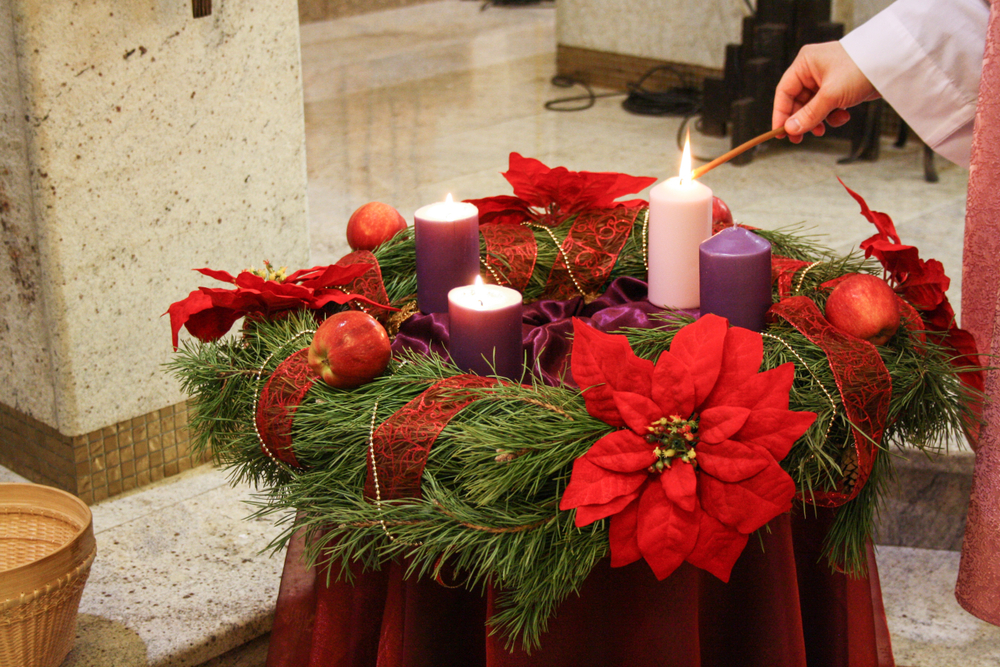Readings
Isaiah 35:1-6a, 10
Be strong, fear not! Here is your God, he comes with vindication; with divine recompense he comes to save you.
James 5:7-10
Make your hearts firm, because the coming of the Lord is at hand.
Matthew 11:2-11
“Go and tell John what you hear and see.”
You can read the full text of this Sunday’s readings here:
Scriptures for the Second Sunday of Advent, Cycle A
Reflection
Our first reading today speaks of new life—growth in the desert, strength for the weak, sight for the blind, hearing for the deaf and joy for those who are mourning. Those who couldn’t walk won’t just have their walking restored, but will “leap like a stag,” and those who couldn’t speak will sing. God’s healing goes way beyond restoration of what was broken. “Here is your God…he comes to save you.” Isaiah says. God didn’t just send healing, God showed up to personally deliver it. That’s not just good news, that’s awesome news. Isaiah speaks of what is to come—for him, it hadn’t happened yet.
James speaks from a time when Jesus had already come into the world, died and resurrected. He has already experienced the world that Jesus had visited. But, he waits in hope for the Second Coming—that’s what he tells us to be patient for. When you get a taste of something great (let’s say, like if you stick your finger in icing on a cake), you can’t wait for the whole experience (you want a whole piece of cake). This is James’ context—he has received the peace of Jesus and he is looking forward to Jesus completing that peace when he comes again. We find ourselves in the same place as James—we have had a taste of God’s presence; in the Church, in our families, in the Eucharist—but we long for the rest. We have some preparation to do to make ourselves ready for that; we need to pray, care for one another, and be God’s peace to others.
Then, there’s our very interesting Gospel. John hears about the things Jesus is doing and sends his disciples to find out if Jesus is the Messiah. Did he send them because he didn’t recognize Jesus, or as a sort of “hand off”; an opportunity to introduce his followers to Jesus, making the transition from preparing their hearts for God to receiving God in the person of Jesus? Jesus tells them to report the evidence that they have seen: Jesus is healing and proclaiming the good news of God’s love and forgiveness—all of the things that Isaiah said would be the sign that the Messiah had come. The things that Jesus did are also what the Jewish Scriptures said would happen in the time of Jubilee. Jesus is the Jubilee.
Break open the word with your family
Kids
Christmas is almost here! The second reading talks about being patient until Jesus comes. What are you most excited for this Christmas?
Teens
When Jesus was approached by John’s disciples, he told them to go back and report what they had seen. That’s always Jesus’ style—he doesn’t want it to be enough for us to just experience him, when we do, we are expected to go and share what we have experienced. What is the most important thing about Jesus that you would want to share with someone else? What is one practical way that you can share it?
Adults
Like James, we are always teetering between the “already” and the “not yet.” We work at and cultivate aspects of our lives (our prayer lives, our children, our marriages or relationships…) in order to bring the “precious fruit” that God makes possible for us. What is one thing that you are working on and waiting for? What is one thing that you have seen come to fruition, and what has that meant to you?
A little lectio
The ancient practice of prayerfully reflecting on bits of Scripture is known as lectio divina. Want to try it out with your family? Head over to Lectio Divina for Kids to find out how to adapt this prayer practice for your kids.
A little Bible study
Want to do a little Bible study with your kids? Here are some tips:
- During Ordinary Time, the Church pairs the Old Testament and New Testament readings in a way that each sheds light on the other. Ask your kids to look for the common theme connecting the two readings. (Sometimes it’s obvious, sometimes it is subtle.) How does the “dialogue” between the readings help you understand them better?
- Get a New American Bible, Revised Edition, and take a look at the footnotes for these readings. How do they change your understanding of what is going on?
- Take a look at the context for the readings—what happens before, or after?
- Read the NABRE’s introduction to the book of the Bible that the readings are taken from. How does that help you understand the readings?
- If you don’t have a copy of the NABRE at home, you can view it online at the USCCB website at the Daily Readings web page.
For even more resources for breaking open this Sunday’s readings, head over to The Sunday Website.



